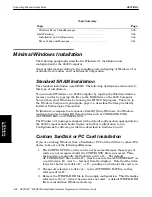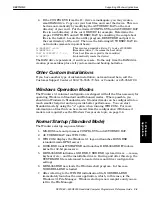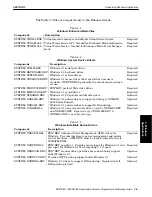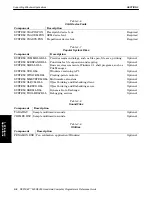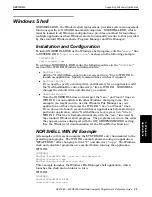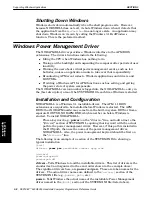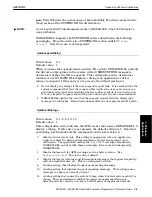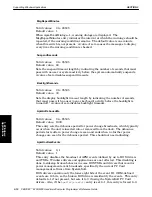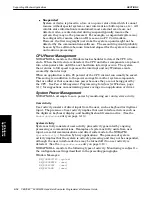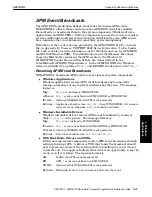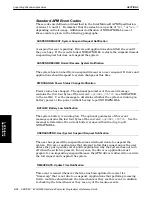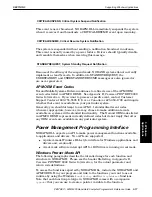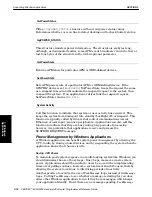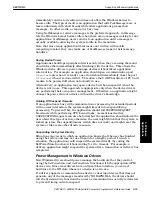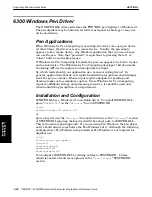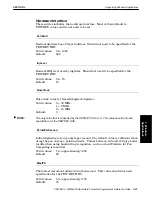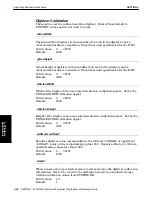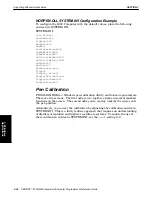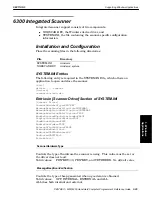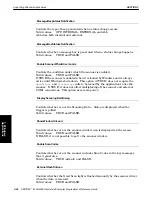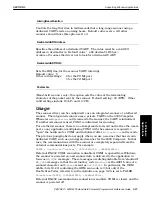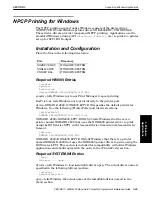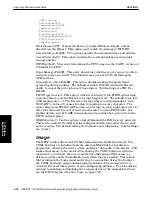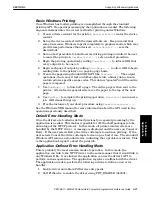
SECTION 3
Supporting Windows Applications
3-16 PEN*KEY
R
6200/6300 Hand-Held Computer Programmer’s Reference Guide
Standard APM Event Codes
These codes are defined and described in the Intel/Microsoft APM Specification,
versions 1.0 and 1.1. Remember that the codes have a prefix of
PWR_
" or
APM_,
"
depending on their usage. Additional clarification of NORAPM.DLL's use of
these events is given in the following paragraphs.
SUSPENDREQUEST, System Suspend Request Notification
A
suspend timeout
is pending. Drivers and applications should fail the event if
they are busy. If the event is failed, NORAPM.DLL restarts the suspend timeout
suspend request but does not suspend the system.
SUSPENDRESUME, Normal Resume System Notification
The system has returned from a suspend timeout or a user suspend. Drivers and
applications should respond to system changes at this time.
PWRCHANGE, Power Status Change Notification
Power status has changed. The optional parameter of this event message
contains the
first
four bytes of the current
tagPOWER_STATUS
(see NORAPM.H,
in the toolkit). Use the message to determine whether the system is running on
battery power or line power without having to poll NORAPM.DLL.
BATLOW, Battery Low Notification
The system battery is running low. The optional parameter of this event
message contains the
last
four bytes of the current
tagPOWER_STATUS
. Use the
message to determine the current battery status without having to poll
NORAPM.DLL.
USERSUSPEND, User System Suspend Request Notification
The user has pressed the suspend/resume switch and wants to suspend the
system. Drivers or applications that attempt to fail this request annoy the user
unless they put up some sort of polite explanation why the system does not turn
off when the switch is pressed. In any case, the driver or application must
prepare for an impending suspend because the APM driver is allowed to override
the fail request and suspend the system.
TIMEUPDATE, Update Time Notification
This event is issued whenever the time has been updated to correct for
timeĆwarp" that is not due to a suspend. Applications that perform processing
tied to real time should check the time whenever they see this event, in addition
to checking the time whenever they see any of the resume events.
3. Windows
Applications

